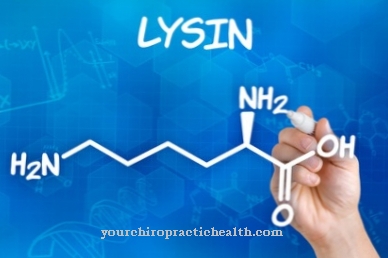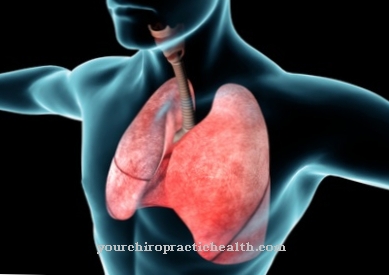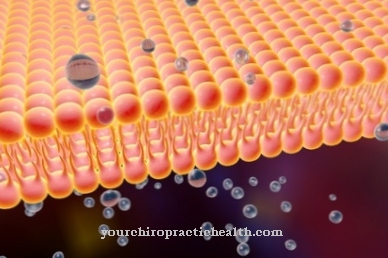The connective tissue is responsible for the cohesion of the organs in the body. It must have a certain elasticity in order to be able to fulfill its sliding and shifting function in the organism. The loss of Connective tissue elasticity can lead to serious illness.
What is connective tissue elasticity?
The connective tissue is not a uniform type of tissue, but is defined by its common properties. It is present everywhere in the body and has supporting functions. Its main task is to maintain the shape of the organs. It protects the organs from damage, stores water and, in cooperation with the immune system, fends off pathogens. However, in addition to its tensile strength, it must also have a certain elasticity so that the position and shape of the organs can be flexibly and reversibly adjusted.
In contrast to other types of tissue, connective tissue consists of relatively few cells. To do this, these cells are connected to one another by a network of protein chains. Every organ is surrounded by connective tissue. The skin and mucous membranes are also part of the connective tissue. There is also a network of protein structures between the organs that keep the organs together.
Function & task
The connective tissue is indispensable for the physical functions and the cohesion of the organs. The elasticity of the connective tissue plays a decisive role. Among other things, it is a prerequisite for smooth muscle work.
With every physical movement it must be guaranteed that the internal organs can adapt flexibly. The same goes for the shape of the organs. Without this flexibility and elasticity, the organs would be damaged with fatal consequences.
However, the function can only be realized through a combination of different types of connective tissue. A distinction is made between loose, tight and reticular connective tissue. Furthermore, fat tissue, gelatinous connective tissue as well as cartilage and bone tissue belong to it.
All in all, all types of connective tissue contain blood vessels and nerves to supply the embedded organs. The loose connective tissue acts as a filling material between the various organs and is used for their mobility, for water storage and as a matrix for many freely mobile cells. At the same time, it also houses immune cells that can fight off pathogens.
Adipose tissue is also a loose connective tissue, which, in contrast to other forms of connective tissue, has hardly any intercellular substance. The tight connective tissue occurs mainly in the dermis of the eyes, in the hard meninges, in the organ capsules and in the muscle tendons. It consists for the most part of collagen fibers, the proportion of which is much higher there than in loose connective tissue. In addition, it has even fewer cells and forms either tight, braided structures in the sclera, meninges and organ capsules or tight, parallel-fiber structures in tendons and ligaments.
The reticular connective tissue is a three-dimensional network and is mainly present in the lymphatic organs such as the spleen, lymph nodes or the lymphatic tissue. The collagen fibers are tensile, but hardly stretchable. In almost all types of connective tissue there are therefore elastic fibers that can be stretched in any direction and return to their original position every time. They consist of fibrillin and the protein elastin. Elastin is a ball-shaped protein chain that can be pulled apart, but then returns to its original shape. This gives the connective tissue its elasticity.
Elastic connective tissue is particularly important in lung tissue, ligaments and arterial blood vessels. The fibrous connective tissue is mainly responsible for the elasticity of the connective tissue, while the loose connective tissue is responsible for the transport of substances between blood and cells.
Illnesses & ailments
If the connective tissue is weakened, its elasticity is also lost. In doing so, its ability to give the body shape and support disappears. The move and slide functions are also no longer performed correctly. Externally, weak connective tissue often becomes noticeable in the form of cellulite, stretch marks or wrinkles.
Furthermore, organ subsidence can occur, as the reduced elasticity of the connective tissue means that it is no longer possible to completely return to the original shape.
Due to other hormonal conditions, women are more likely to suffer from weak connective tissue than men. More cross-links were found in the connective tissue of the average man, which support its strength and elasticity.
One of the most common connective tissue weaknesses manifests itself in the so-called uterine subsidence, which affects many women. The uterus presses on other organs such as the urinary bladder and can lead to unpleasant pain or, in individual cases, even to life-threatening conditions (such as urinary obstruction).
There are many causes that can weaken the connective tissue. Diet, hormonal changes, medication and certain genetic defects all play a major role. For example, the condition of the connective tissue worsens when the body becomes too acidic. Important protein chains with a supporting function are broken down.
With hormonal changes during menopause, the estrogen level drops. This also leads to a weakening of the connective tissue. Some drugs also promote acidification of the body and thus contribute to a decrease in the elasticity of the connective tissue.
But there are also genetic conditions that produce defective connective tissue structures and thus cause the most serious diseases. An example is the so-called Marfan syndrome, which is inherited as an autosomal dominant trait and manifests itself through vascular malformations (aneurysms), eye diseases, anomalies of the skeletal system and skin anomalies.
Also known is the acquired connective tissue disease scurvy, which used to occur frequently in seafarers due to a lack of vitamin C supply and which often led to death. As a coenzyme, vitamin C is responsible for the hydroxylation of proline and lysine and thus ensures that the protein chains of the connective tissue are networked.
























.jpg)



